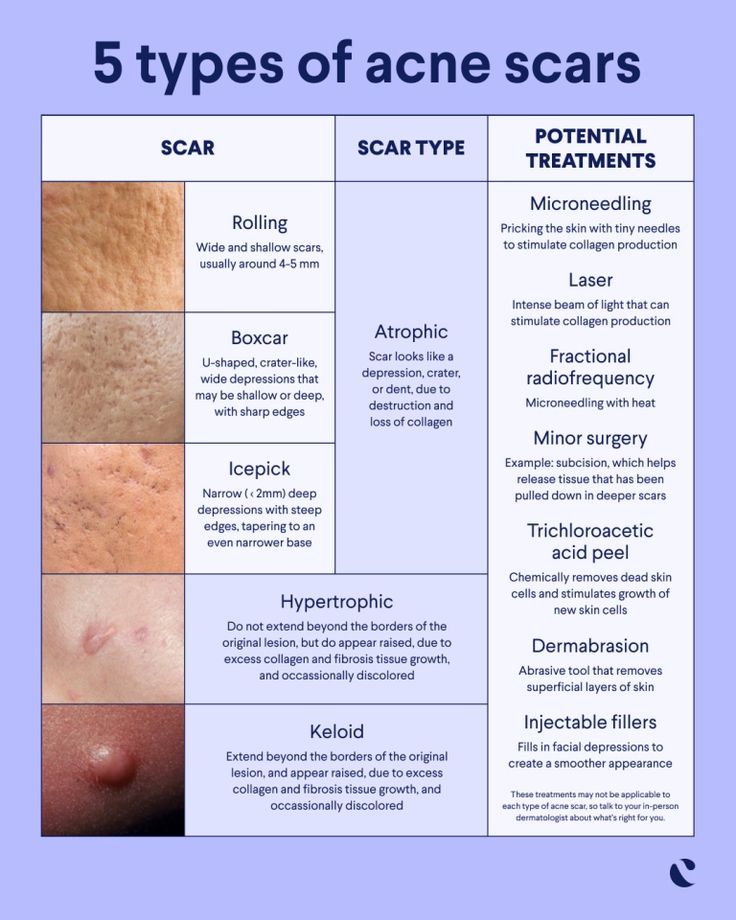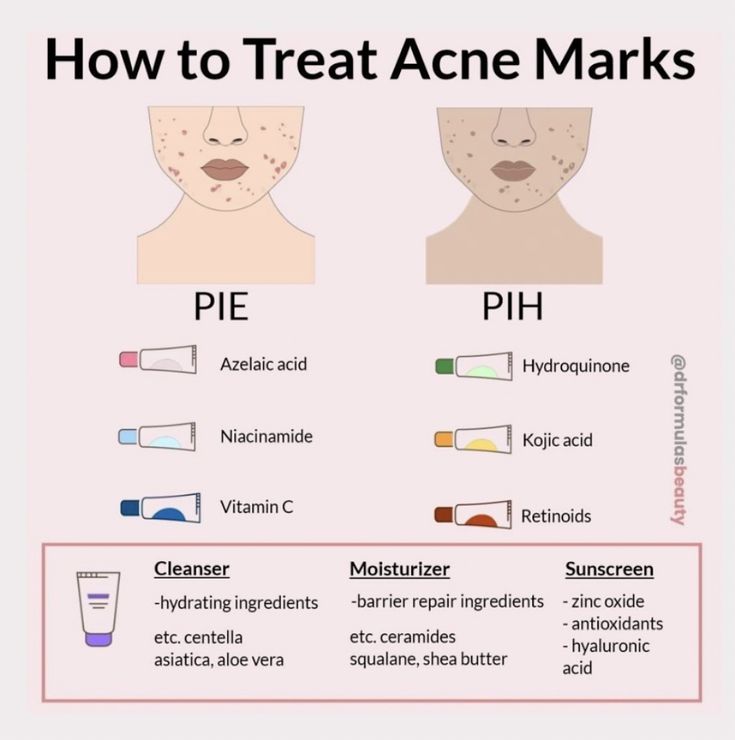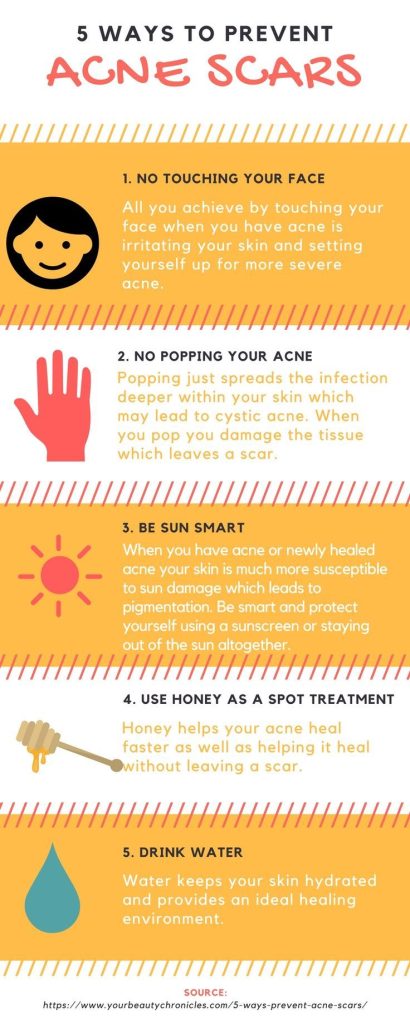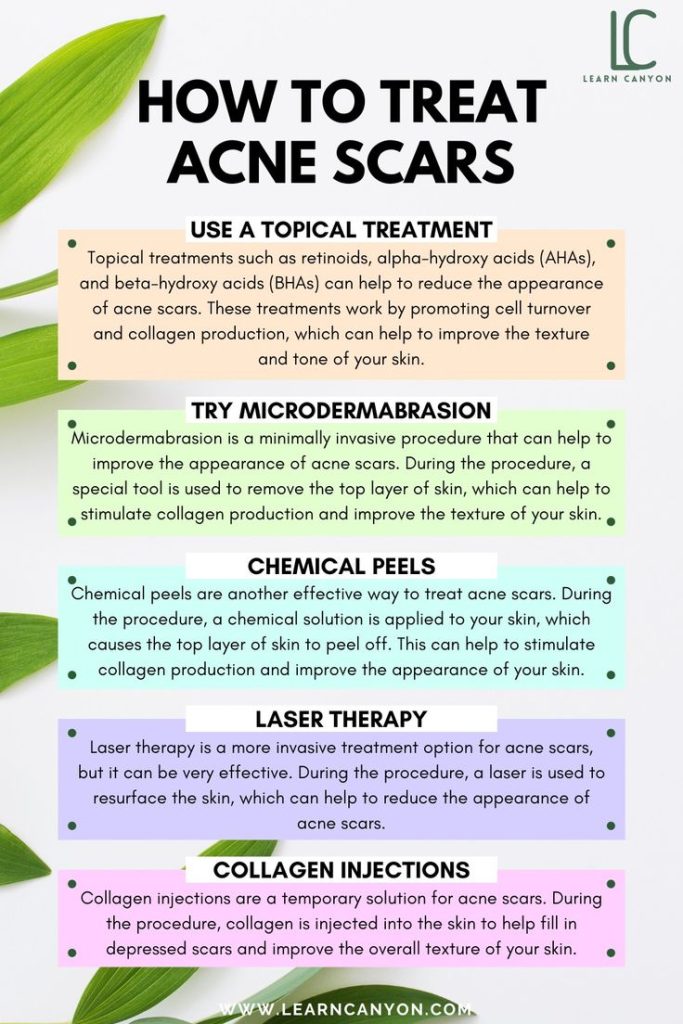What is Acne Scarring?
Acne scars are a common aftermath of acne, affecting about 1 in 5 people. These scars can appear on the face, chest, or back, and they often persist even after the acne itself has cleared up. Acne lesions, or pimples, occur when hair follicles on the skin become blocked by oil and dead skin cells, providing an ideal environment for bacteria to grow and cause inflammation.
While acne scars can fade over time, they rarely disappear completely on their own. Consulting with a dermatologist is recommended for individuals seeking to diminish the appearance of acne scars. Dermatologists can assess the scar type, skin type, and severity of scarring to recommend appropriate treatments.
There are various approaches to improving the appearance of acne scars, and the effectiveness of each treatment can vary depending on individual factors. Some common treatment options include chemical peels, microdermabrasion, laser therapy, dermabrasion, filler injections, steroid injections, and surgical procedures.
It’s important to note that acne is an inflammatory skin disorder characterized by clogged hair follicles, with outbreaks typically occurring on the face but also potentially appearing on the back, chest, and shoulders. The sebaceous glands in the skin produce oil (sebum), which, along with dead skin cells, can plug the pores and lead to the development of pimples or zits. When the follicle wall breaks down, it can result in the spillage of bacteria, skin cells, and sebum into nearby skin, causing inflammation and lesions.
While acne is most common during adolescence due to hormonal changes, it can persist into adulthood for some individuals. Effective acne treatments are available, but they may require persistence and patience, as acne lesions can heal slowly and new ones may continue to appear. Early initiation of treatment is advisable to reduce the risk of emotional distress and scarring associated with acne.

What are the types of Acne?
- Mild Acne: This type typically presents as whiteheads or blackheads, which are non-inflammatory lesions. They are less likely to result in scarring.
- Moderate Acne: This can include red, inflamed pimples known as papules, and red pimples with white centers known as pustules. Moderate acne has a higher likelihood of causing scarring compared to mild acne.
- Severe Acne: This form of acne leads to painful, pus-filled cysts or lumps called nodules under the skin. Severe acne is more prone to causing significant scarring, with nodules being particularly likely to leave permanent scars.
- Atrophic Scars: These scars result from the loss of skin tissue and appear as depressions or pits on the skin. Atrophic scars can be further categorized into:
- Ice Pick Scars: Small, narrow, and deep scars resembling puncture marks.
- Boxcar Scars: Round or oval depressions with well-defined edges, similar to scars left by chickenpox.
- Rolling Scars: These scars create a wave-like or uneven texture on the skin’s surface due to damage beneath the skin.
- Hypertrophic Scars: Unlike atrophic scars, hypertrophic scars involve the overproduction of collagen during the healing process, resulting in raised, thickened tissue. These scars may be itchy and tender.
- Keloid Scars: Keloids are thick, raised scars that extend beyond the boundaries of the original acne lesion. They can be reddish-purple in color and are more common in individuals with darker skin tones.
What Are the Causes of Acne Scars?

- Acne Formation: Acne occurs when hair follicles become blocked by excess sebum (oil), dead skin cells, and bacteria. This blockage can lead to various types of lesions, including whiteheads, blackheads, pimples, and cysts.
- Factors Contributing to Acne:
- Excess oil production by sebaceous glands
- The buildup of dead skin cells in pores
- Bacterial growth, particularly Propionibacterium acnes (P. acnes)
- Inflammation
- Triggers and Risk Factors for Acne:
- Hormonal changes, especially during puberty and menstrual cycles
- Genetics, with a family history of acne increases the likelihood of developing it
- Certain medications containing hormones, corticosteroids, or lithium
- High-glycemic-index diets, stress, and environmental factors may exacerbate acne but do not directly cause it
- Acne Scarring:
- Acne scars form when the skin’s healing process is disrupted, often due to deep skin damage from severe acne lesions such as nodules and cysts.
- Picking or squeezing acne blemishes can also increase the likelihood of scarring by further inflaming the skin.
- Genetics and individual healing processes can influence the likelihood of developing acne scars.
- Scars can manifest as raised (hypertrophic or keloid) or depressed (sunken) areas on the skin.
- Treatment and Prevention:
- Treatment options for acne and acne scars include topical medications, oral medications, laser therapy, chemical peels, and microneedling.
- Prevention strategies focus on managing acne through proper skin care, avoiding picking or squeezing blemishes, and seeking timely treatment from dermatologists.
How can I prevent Acne Scars?

Preventing Acne:
- Treat Acne Early: Begin treating acne as soon as it appears to prevent it from worsening and potentially causing scarring. Over-the-counter medications can be effective for mild acne, but if it persists or worsens, consult a healthcare provider or dermatologist for prescription treatment options.
- Reduce Inflammation: Inflamed acne lesions are more likely to cause scarring. Reduce inflammation by avoiding skin irritation and aggressive skincare practices. Spot treatments designed to reduce acne inflammation can also be helpful.
- Avoid Picking or Popping Acne: Picking or popping acne can introduce bacteria and worsen inflammation, increasing the risk of scarring. Allow acne lesions to heal naturally and avoid picking scabs.
- Sun Protection: Excessive sun exposure can worsen acne and increase the risk of scarring. Use broad-spectrum sunscreen with SPF 30 or higher, and avoid tanning beds.
- Gentle Skincare Routine: Use gentle cleansers and avoid harsh scrubbing, which can irritate the skin and exacerbate acne. Choose non-comedogenic or non-acnegenic skincare products to prevent pore blockage.
- Dietary Considerations: Some studies suggest that certain foods, such as those with a high glycemic index, may exacerbate acne. Consider avoiding such foods and maintaining a balanced diet.
Preventing Acne Scars:
- Treat Acne Promptly: Treating acne promptly can prevent it from progressing to more severe forms that are more likely to cause scarring. Early treatment with medications like retinoids can help prevent scarring.
- Avoid Irritation: Minimize skin irritation by avoiding abrasive skincare practices and products. Opt for gentle cleansing and skincare routines to promote skin healing.
- Professional Treatments: Consider professional treatments such as laser therapy, micro-needling, dermal fillers, chemical peels, and surgical procedures for acne scars. Consult a dermatologist to discuss appropriate treatment options based on your skin type and scar severity.
- Healthy Lifestyle Habits: Maintain a healthy lifestyle by avoiding smoking, managing stress, and practicing good skincare habits. These factors can contribute to overall skin health and minimize the risk of scarring.
What are the Treatment of Acne Scars?

Medical Treatments:
- Chemical Peels: Different types of peels, such as trichloroacetic acid (TCA) or glycolic acid, can help improve acne scars. TCA peels have shown significant improvement in some cases.
- Injections: Corticosteroid injections can flatten raised scars like hypertrophic or keloid scars by softening the tissue. Dermal fillers may also be used for atrophic scars.
- Microneedling: This procedure stimulates collagen production, improving the appearance of atrophic scars. Combining it with collagen gel can enhance effectiveness.
- Laser Treatment: Laser therapy can resurface the skin, reducing the appearance of scars. Different types of lasers target various aspects of scarring, such as texture or pigmentation.
- Surgery: Surgical options include excising scars or using electrodessication to flatten edges of boxcar scars.
Home Remedies:
- Silicone Sheets: These sheets can be applied to scars to flatten and soften them.
- Pressure and Massage: Applying pressure and massaging the scar tissue may help weaken scar tissue over time.
- Onion Extract Creams: Some over-the-counter creams containing onion extract, like Mederma, may help reduce the appearance of scars.
- Bio-Oil: Bio-Oil is marketed for various types of scars and may help improve the appearance of acne scars.
Skin Care and Maintenance:
- Benzoyl Peroxide: Helps reduce acne by killing bacteria and has an anti-inflammatory effect.
- Topical Retinoids: Tretinoin and adapalene are examples that exfoliate the skin and prevent dead skin buildup.
- Topical Antibiotics: Kills bacteria on the skin to prevent infections in hair follicles.
- Azelaic Acid: Alternative treatment for acne, working by eliminating dead skin and killing bacteria.
Important Considerations:
- The choice of treatment depends on the type and severity of acne scars, as well as individual skin characteristics.
- Medical treatments should be performed by a dermatologist or qualified healthcare professional.
- Home remedies and skincare products should be used cautiously, and it’s essential to follow instructions and be patient with results.
- Prevention of acne scars includes proper acne treatment, avoiding picking or popping pimples, and protecting the skin from sun exposure.